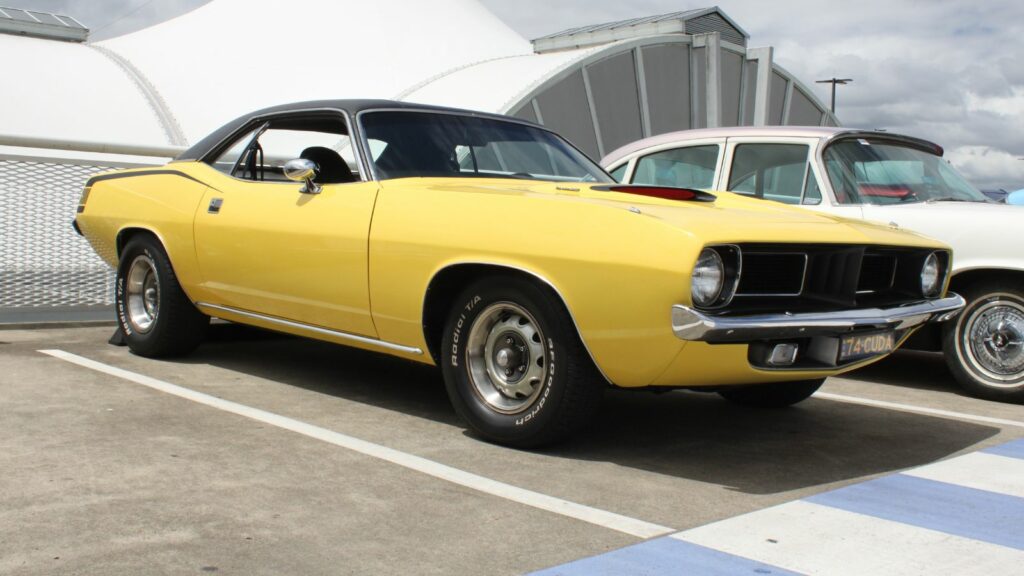The muscle car era left such a strong impression that plenty of vehicles have been mislabeled as muscle over the years. Big engines, aggressive styling, or marketing hype sometimes trick people into thinking a car fits the muscle mold when it really does not. True muscle cars were American made midsize coupes and sedans from the 1960s and 1970s, built with V8 power at an affordable price. These 12 cars are often mistaken for muscle, but they bend or break the rules. Here is a deeper look, with production years, engine specs, and current collector values.
Ford Mustang

The Ford Mustang debuted in 1964 and is often thought of as the original muscle car, but it actually created the pony car segment. Early Mustangs offered engines from a 170 cubic inch inline six with 101 horsepower to a 289 cubic inch V8 producing 271 horsepower. Later Shelby GT350 and Boss 429 versions had the speed to rival true muscle cars. With more than 400,000 sold in its first year, its affordability cemented its place in history. Today, early Mustangs range from 20,000 to over 100,000 dollars depending on rarity and condition.
Chevrolet Camaro
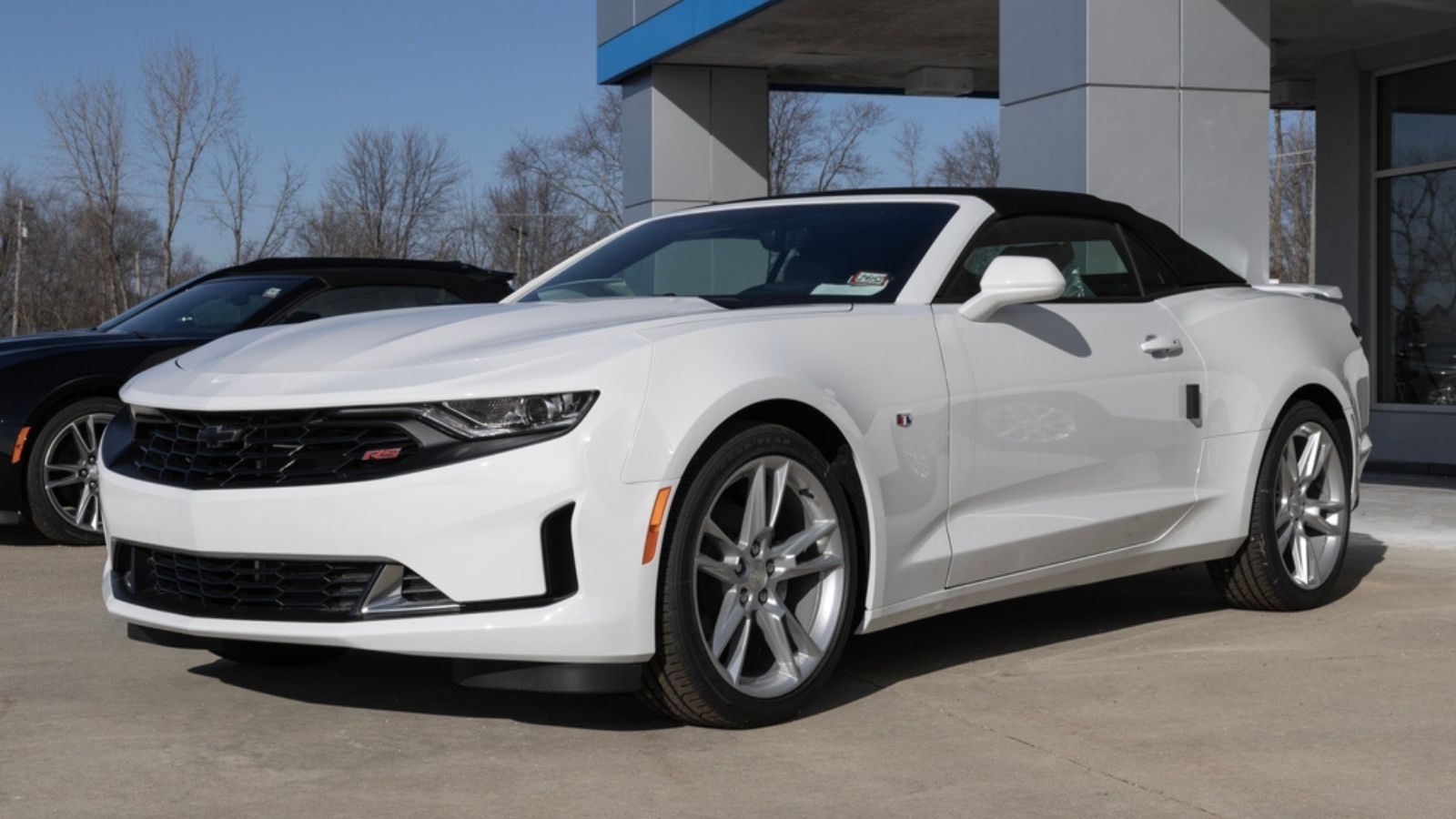
Introduced in 1967, the Chevrolet Camaro was GM’s direct response to the Mustang. Engines ranged from a base 230 cubic inch six to the legendary 396 big block producing 375 horsepower. High performance Z28 and SS trims earned respect on drag strips and road courses alike. While its compact F body design makes it a pony car, the Camaro’s reputation often places it in muscle conversations. First generation Camaros are now valued between 30,000 and 120,000 dollars.
Pontiac Firebird
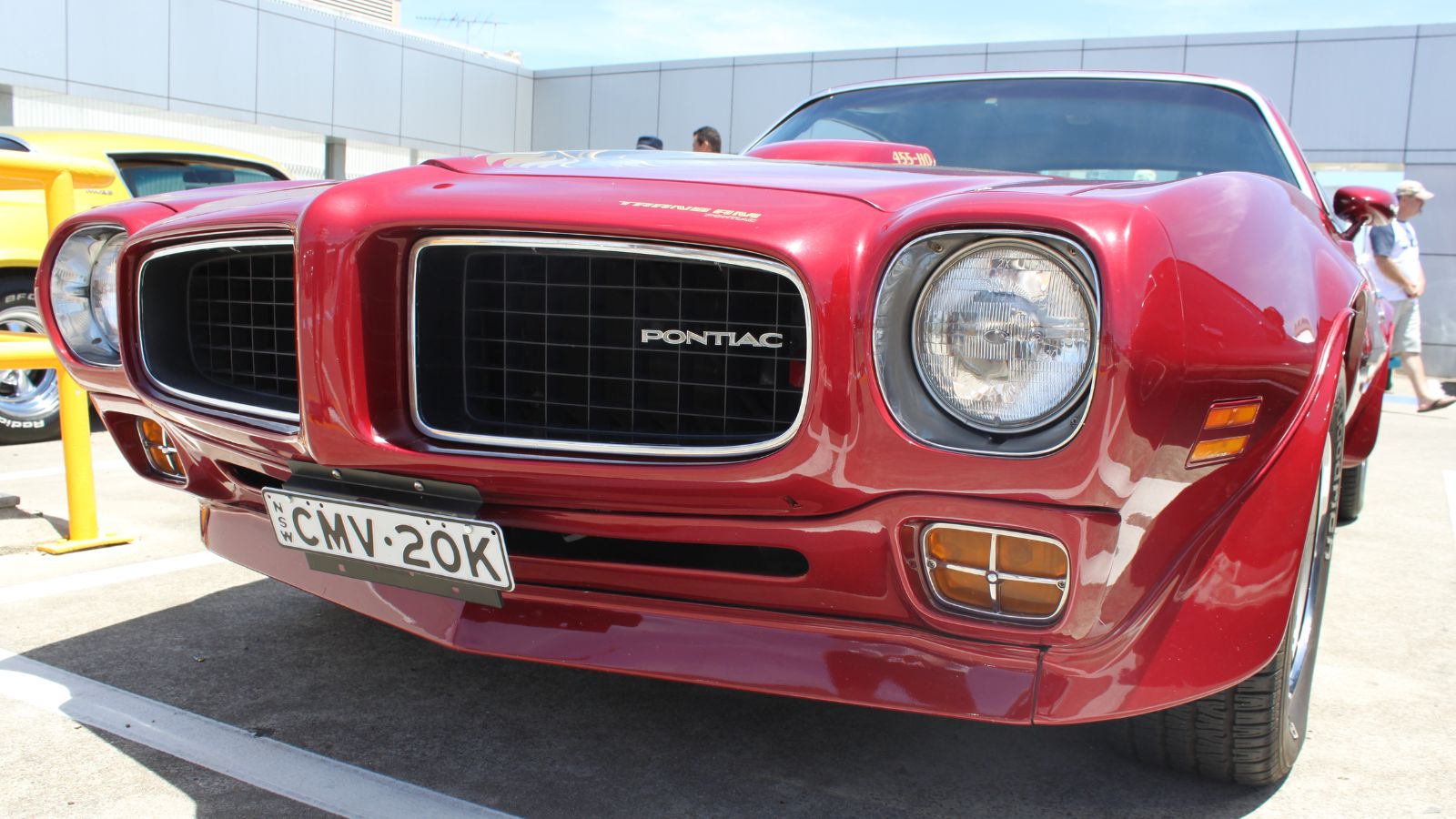
The Pontiac Firebird, also introduced in 1967, shared its platform with the Camaro. Its base engines were six cylinders, but buyers could choose V8s up to a 400 cubic inch Ram Air IV producing 345 horsepower. The Trans Am models of the 1970s added iconic styling with shaker hoods and spoilers, making them look every bit the muscle car. Collectors now pay 25,000 to 90,000 dollars for clean first and second generation Firebirds, with Trans Ams commanding a premium.
Dodge Challenger
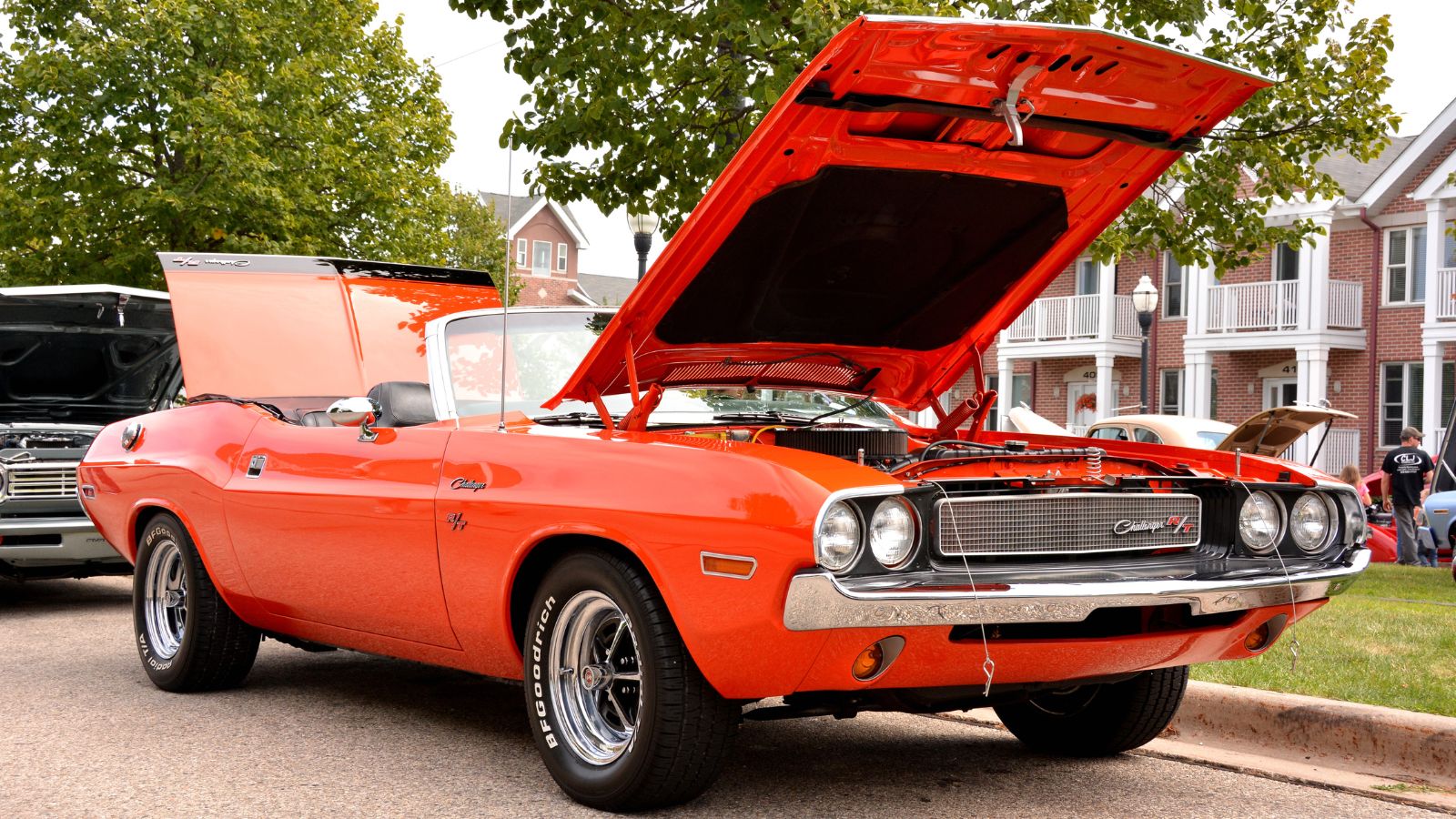
The Dodge Challenger arrived in 1970 as Chrysler’s answer to the Mustang and Camaro. While it is technically a pony car, its larger E body design and engine options blurred the lines. Buyers could order anything from a 225 cubic inch slant six to the 426 Hemi with 425 horsepower. Hemi Challengers are among the most sought after American classics, often selling for 150,000 dollars or more, but most Challengers were built with small block engines, making them less “muscle” than their image suggests.
Plymouth Barracuda
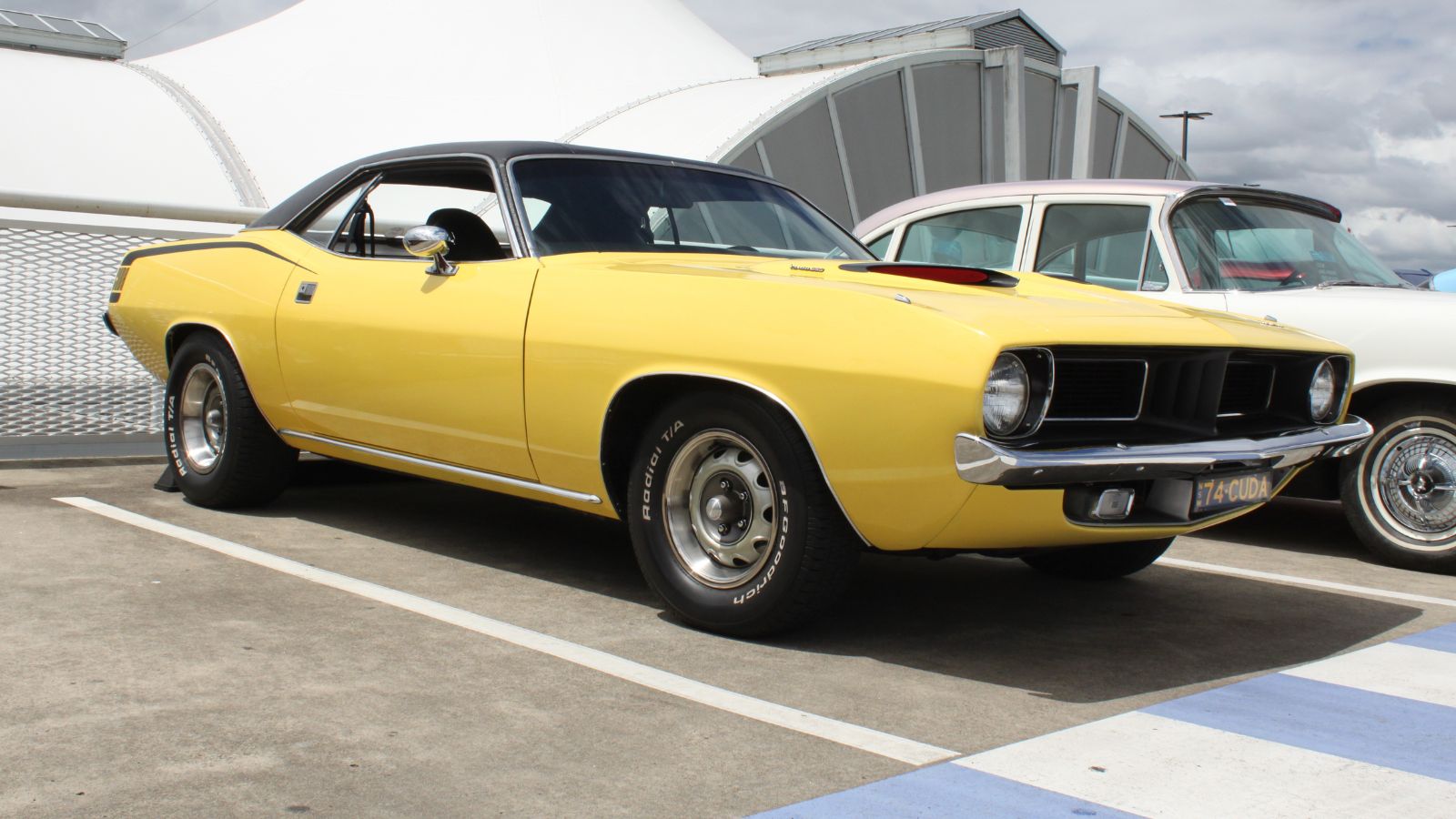
The Barracuda actually hit the market two weeks before the Mustang in 1964, but its compact A body platform placed it closer to pony cars. Early versions offered six cylinder and small block V8 engines. By 1970, the Barracuda moved to the E body platform and gained access to Chrysler’s 426 Hemi and 440 Six Pack engines, producing up to 425 horsepower. While those versions embody muscle car performance, the Barracuda’s origins mean it straddles the line. Today, 1970–1971 Hemi ’Cudas are million dollar auction cars, while base models are valued around 25,000 to 50,000 dollars.
AMC Javelin
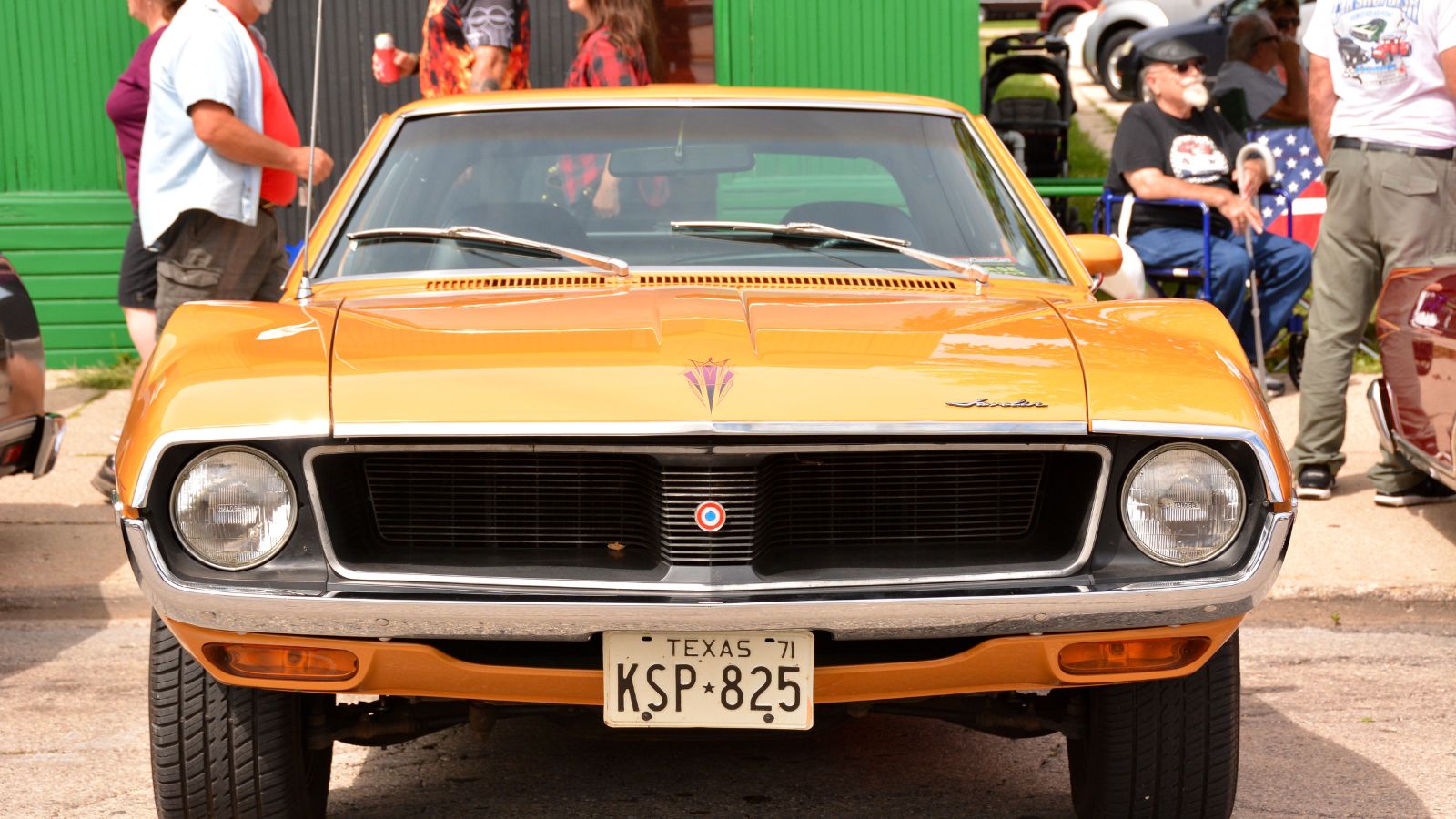
American Motors introduced the Javelin in 1968 as its Mustang fighter. Engine choices ranged from a 232 cubic inch six to the AMC 401 V8 producing 335 horsepower. The Javelin had Trans Am racing credibility thanks to Mark Donohue’s successes, but it was technically a pony car. Collectors today see it as an undervalued classic, with prices ranging from 15,000 to 40,000 dollars.
Chevrolet Corvette
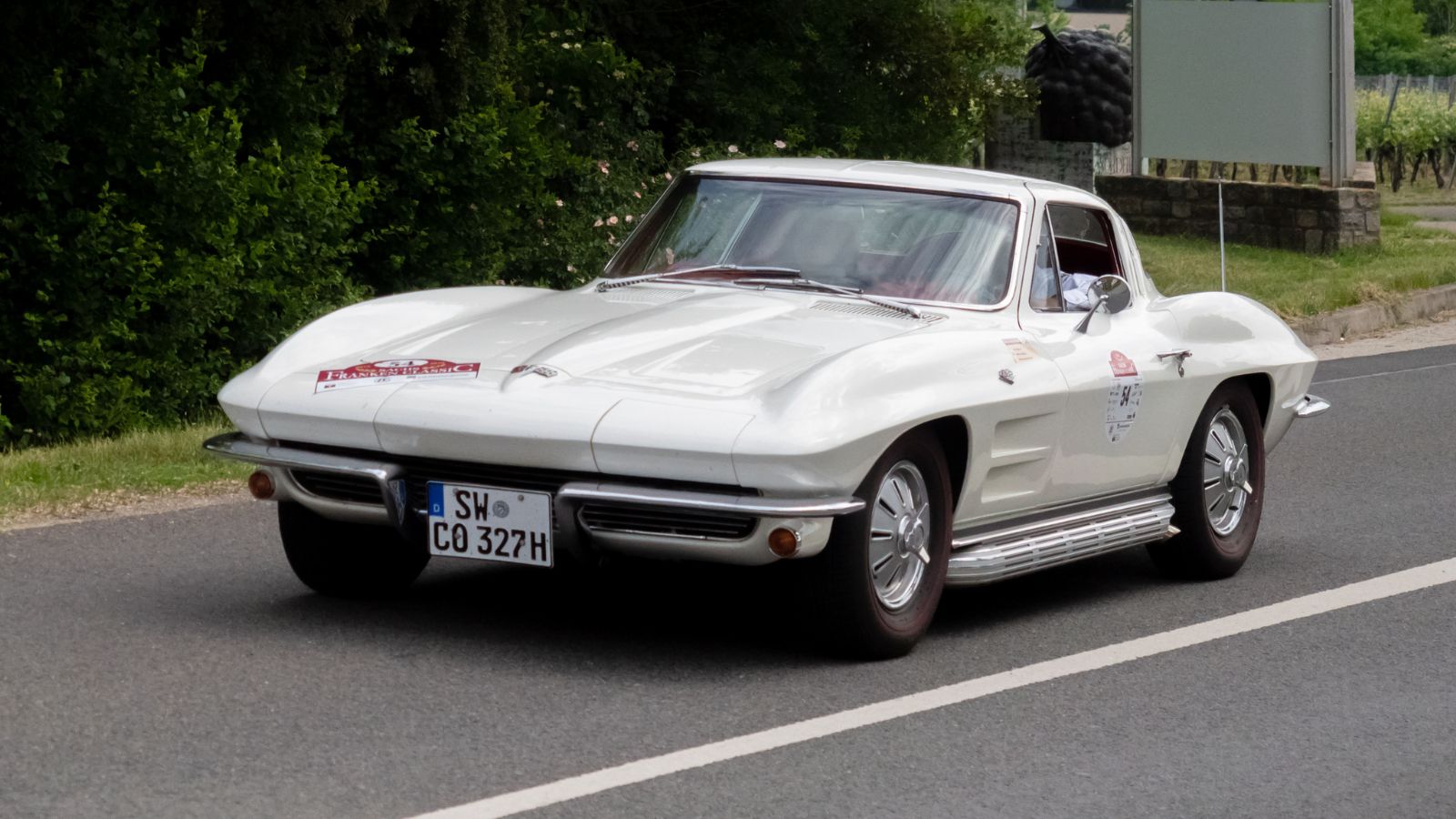
The Corvette has always been marketed as America’s sports car rather than a muscle car. The C2 generation (1963–1967) and C3 generation (1968–1982) offered engines ranging from a 327 small block to the fearsome 427 big block producing up to 435 horsepower. Its two seat fiberglass body, independent suspension, and premium price set it apart from muscle cars. Classic Corvettes vary widely in value, from 30,000 to over 150,000 dollars for big block models.
Pontiac Grand Prix
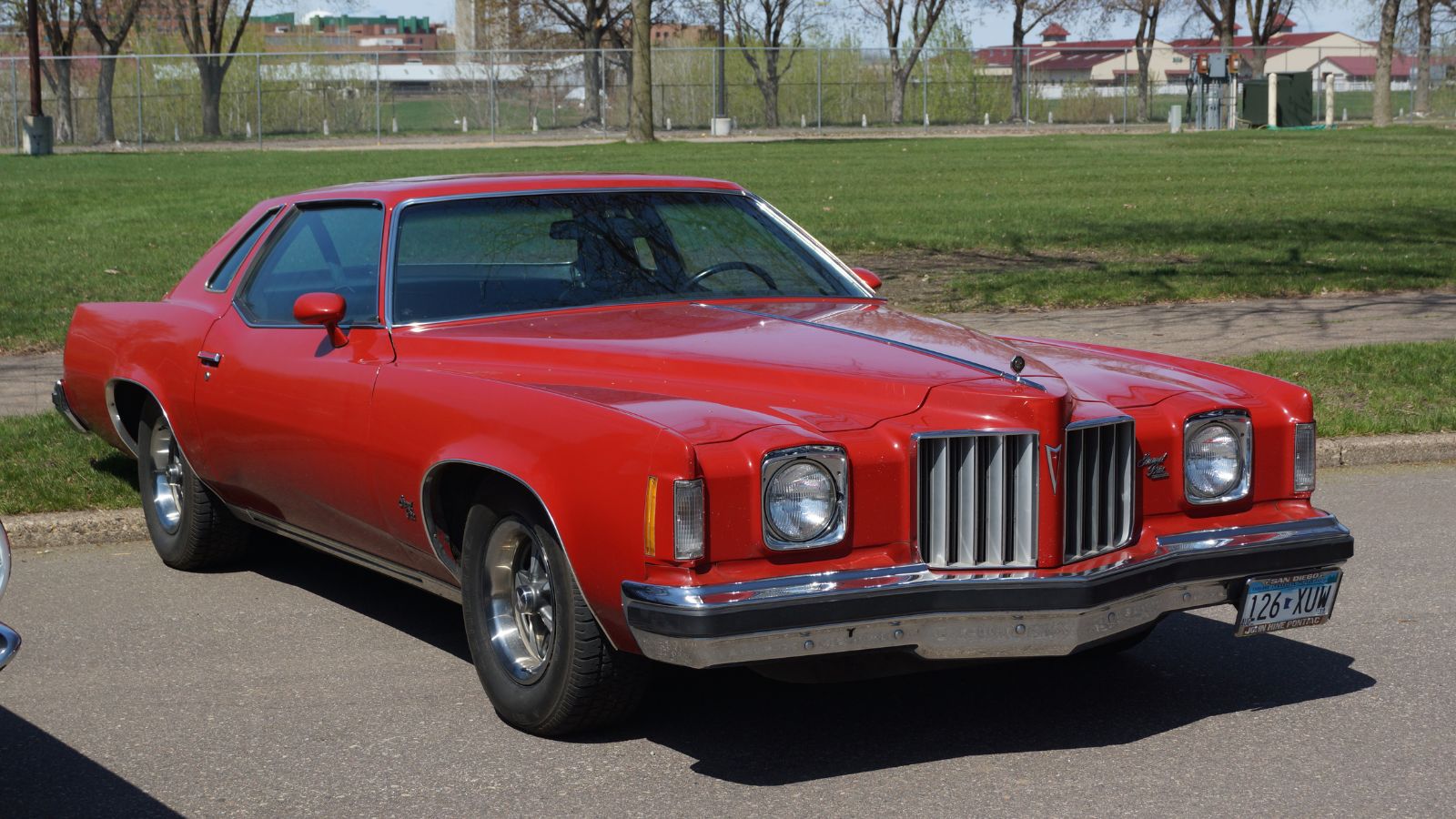
The Pontiac Grand Prix of the late 1960s and early 1970s mixed muscle performance with luxury. Engines included Pontiac’s 400 and 455 cubic inch V8s, with up to 370 horsepower. While it had the power, its larger G body design and emphasis on comfort classified it as a personal luxury coupe. Values today run between 15,000 and 30,000 dollars, making it a bargain compared to true muscle cars.
Ford Thunderbird
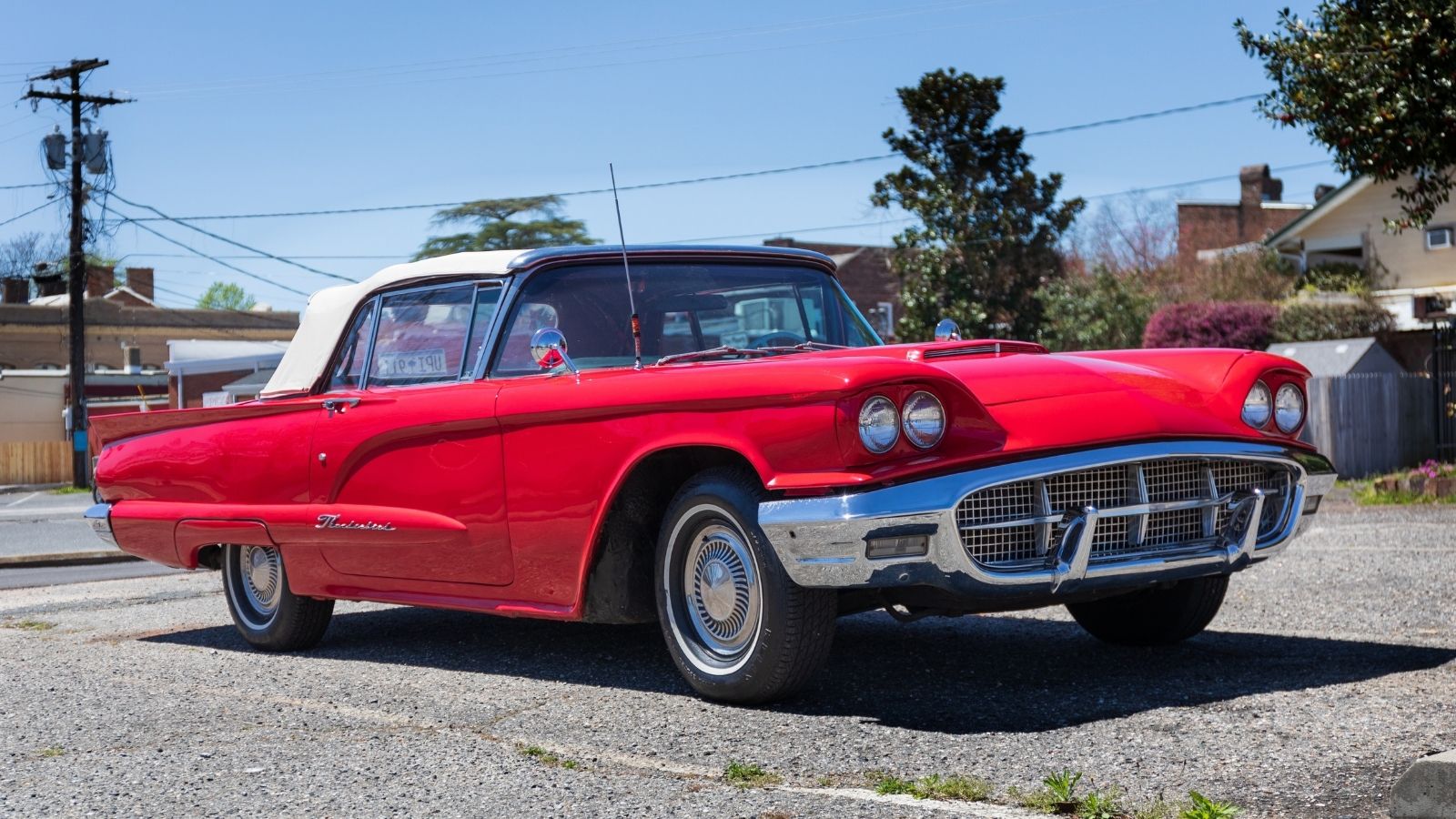
The Thunderbird shifted identities many times over its long run. The 1955–1957 two seat T Bird was more of a sporty roadster, while later versions grew into massive luxury coupes. By the early 1970s, Thunderbirds could be ordered with engines up to 460 cubic inches, but their weight and luxury features kept them from muscle car status. Collectors value early two seat Thunderbirds highly, often above 40,000 dollars, while 1970s models remain affordable around 10,000 to 20,000 dollars.
Buick Riviera
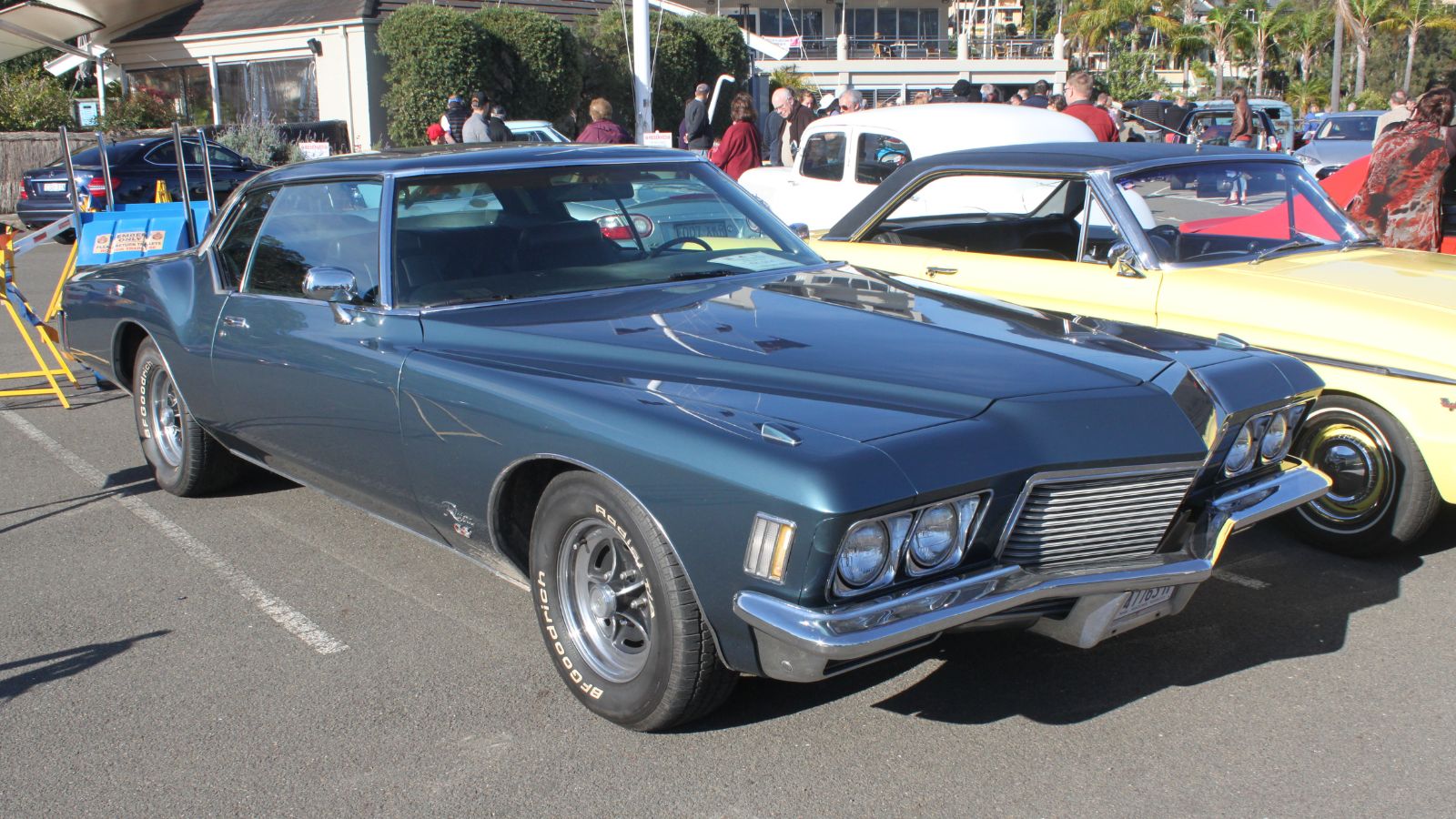
The Buick Riviera GS offered a 455 cubic inch V8 with up to 370 horsepower in the early 1970s. Despite its power, the Riviera was a personal luxury coupe aimed at well heeled buyers who wanted refinement along with performance. Its 1971–1973 “boat tail” styling makes it stand out today. Collector values range from 15,000 dollars for driver quality cars to 40,000 dollars for pristine GS models.
Mercury Cougar

The Mercury Cougar was introduced in 1967 as an upscale cousin to the Mustang. Engines included a 289 small block and a 428 Cobra Jet option producing 335 horsepower. Performance trims like the Eliminator gave it real street credibility, but Ford marketed it as a luxury pony car rather than a pure muscle machine. Today, Cougars are often overlooked by collectors, with values ranging from 15,000 to 40,000 dollars.
Oldsmobile Toronado
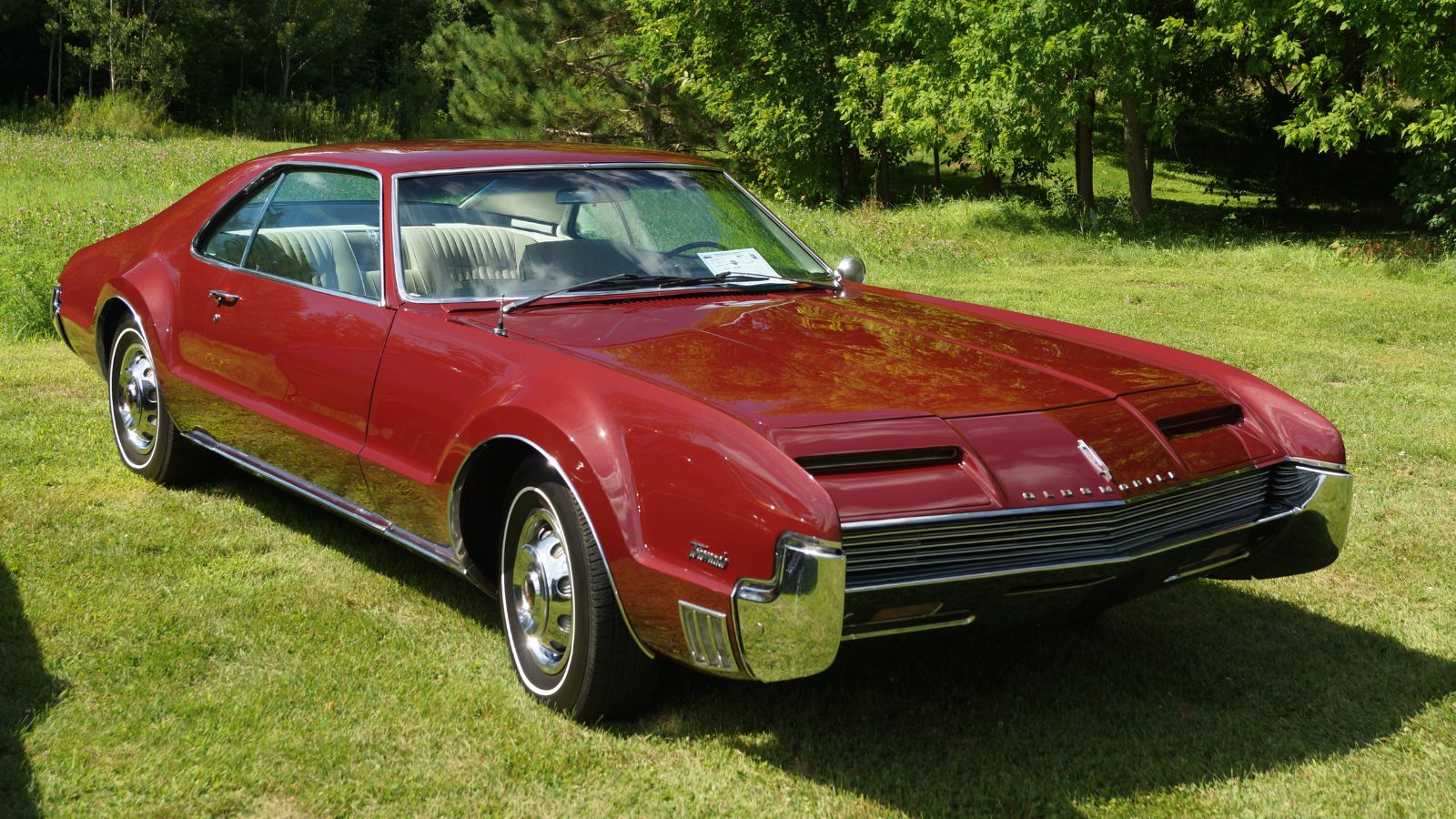
The Oldsmobile Toronado debuted in 1966 with a revolutionary front wheel drive layout and a 425 cubic inch V8 producing 385 horsepower. Later versions used a 455 cubic inch engine with similar output. While the performance was strong, its massive size and luxury features placed it firmly in the personal luxury category. Collectors admire its innovation, and values range from 12,000 to 30,000 dollars depending on year and condition.
25 Facts About Car Loans That Most Drivers Don’t Realize

Car loans are one of the most common ways people fund car purchases. Like any other kind of loan, car loans can have certain features that can be regarded as an advantage or a disadvantage to the borrower. Understanding all essential facts about car loans and how they work to ensure that you get the best deal for your financial situation is essential. Here are 25 shocking facts about car loans that most drivers don’t realize:
25 Facts About Car Loans That Most Drivers Don’t Realize
